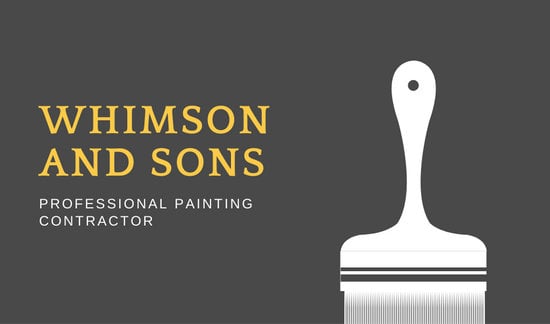Learn Exactly How Seasonal Aspects Affect Commercial Outside Paint Success And Uncover The Most Effective Times To Ensure Long Lasting Results For Your Job
Learn Exactly How Seasonal Aspects Affect Commercial Outside Paint Success And Uncover The Most Effective Times To Ensure Long Lasting Results For Your Job
Blog Article
Web Content Author-Leach Decker
When you're planning a business outside paint job, seasonal factors can make or damage your outcomes. You'll want to take into consideration how temperature level and humidity influence paint application and drying out times. Choosing read review can guarantee your paint sticks effectively and lasts much longer. However which periods are genuinely the most effective for this type of work? Let's discover the key elements that can influence your project's success.
The Effect of Temperature on Paint Application
When you're planning a business exterior paint job, the temperature level can substantially affect just how well the paint adheres and dries out.
Ideally, you wish to paint when temperatures vary in between 50 ° F and 85 ° F. If it's too cool, the paint might not heal appropriately, bring about issues like peeling or breaking.
On the other hand, if it's too warm, the paint can dry out too swiftly, protecting against proper bond and causing an uneven coating.
painter close to me need to also think about the time of day; early morning or late afternoon offers cooler temperatures, which can be much more beneficial.
Constantly inspect the producer's recommendations for the specific paint you're making use of, as they commonly offer guidance on the optimal temperature variety for ideal results.
Moisture and Its Result on Drying Times
Temperature isn't the only environmental factor that influences your business exterior paint task; moisture plays a considerable duty as well. High humidity degrees can slow down drying times substantially, impacting the total quality of your paint task.
When the air is filled with moisture, the paint takes longer to cure, which can lead to problems like inadequate attachment and a higher threat of mold growth. If you're repainting on an especially humid day, be planned for extended wait times between layers.
It's critical to check neighborhood weather conditions and strategy accordingly. Ideally, aim for moisture degrees between 40% and 70% for optimum drying.
Keeping these factors in mind guarantees your job remains on track and provides a long lasting finish.
Best Seasons for Commercial Outside Painting Projects
What's the best season for your industrial outside paint jobs?
Spring and very early fall are commonly your best choices. During these periods, temperatures are mild, and moisture levels are usually lower, creating perfect problems for paint application and drying out.
Stay clear of summertime's intense heat, which can trigger paint to completely dry too promptly, causing inadequate attachment and surface. Similarly, winter's cold temperatures can impede appropriate drying out and healing, risking the long life of your paint task.
Aim for days with temperatures in between 50 ° F and 85 ° F for optimum outcomes. Remember to check the local weather prediction for rain, as wet conditions can destroy your job.
Preparation around these variables ensures your paint project runs smoothly and lasts much longer.
Final thought
In conclusion, intending your industrial external paint projects around seasonal factors to consider can make a substantial distinction in the end result. By organizing job throughout the optimal temperature levels and humidity levels, you'll ensure far better attachment and drying out times. Remember to keep an eye on local weather prediction and pick the right time of year-- springtime and very early loss are your best choices. Taking these steps will aid you accomplish a long lasting and expert finish that lasts.
